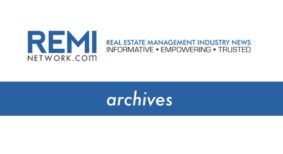On November 16, 2015, Ontario’s Ministry of the Environment and Climate Change (“MOECC”) posted details about Ontario’s proposed greenhouse gas (GHG) cap-and-trade system (cap-and-trade system) to the Environmental Registry (EBR #012-5666) for public comment. The public comment period ends on December 15, 2015. What follows is a summary of Ontario’s proposed cap-and-trade system.
Cap-and-trade system design options
Timing
The MOECC is proposing that the cap-and-trade system begin on January 1, 2017. Implementation of the cap-and-trade-system by January 1, 2017 is expected to give Ontario enough time to meet its 2020 greenhouse gas reduction target of 15 per cent below 1990 GHG emission levels. The first auction of emissions allowances would then take place in March 2017.
Sector Coverage
The cap-and-trade system would regulate combustion emissions and fixed process emissions from the following sectors:
- electricity, including imported electricity for consumption in Ontario ¨ industrial and large commercial (e.g. manufacturing, base metal processing, steel, pulp and paper, food processing)
- institutions
- transportation of fuel, including propane and oil
- distribution of natural gas (e.g. heating fuel).
Industrial and institutional sources emitting greater than or equal to 25,000 tonnes of carbon dioxide equivalent (“CO2e”) per year would be regulated at the point of emission (i.e., facility level). Electricity, transportation fuels, and natural gas would be regulated at the distribution level. Ontario is not currently considering applying the cap-and-trade system at the point of consumption (e.g. vehicle owners or home owners).
Cap on GHG Emissions
The cap on GHG emissions would decline at a rate that would allow Ontario to meet its 2020 greenhouse reduction target. The MOECC has not confirmed a specific cap for the 2017 compliance period or a rate at which the 2017 cap would decrease. The 2017 GHG emissions cap is expected to account for the anticipated growth of the economy, including new and expanding facilities.
Market Rules
All entities under the cap-and-trade system would have to be registered with the MOECC. There would be limits placed on holding and purchasing allowances for market stability. Auctions would be held quarterly at a minimum price using single-round sealed bids in lot sizes of 1000 allowances. Initial auctions would be Ontario-only and would eventually expand to include California’s and Quebec’s cap-and-trade systems. The minimum price per allowance would align with the joint California and Quebec market. Ontario would hold back 5 per cent of total allowances as a strategic reserve to be sold at fixed prices. This would be done to ensure price stability in the event of high demand for allowances. The price of these strategic reserves would also be in line with those held in California and Quebec.
Using Allowances
A facility would be able to use allowances from its allowance holding account to counter any emissions that exceed its cap. Subject to holding limits, unused allowances would be allowed to be banked indefinitely. A facility would not be permitted to borrow allowances from future years.
Using Offset Credits
A facility would also be allowed to use offset credits to counter excess GHG emissions by a maximum of 8 per cent. Offset credits created by industries not covered in the cap-and-trade system would be sold to regulated sectors via an Offset Credit Registry. What will be considered a recognized “offset credit” has not yet been decided. Initial proposed offset project types focus on:
- mine methane capture and destruction
- landfill gas capture and destruction
- ozone depleting substances capture and destruction
Additional offset project types being considered include agricultural and forestry related projects.
New and Existing Facilities
New facilities that commence operations after January 1, 2016 and emit greater than or equal to 25,000 tonnes of CO2e per year would have to comply with the cap-and-trade system in their third year of operation. Existing facilities that exceed the 25,000 tonnes of CO2e per year threshold would have compliance obligations in the first year the threshold is exceeded.
Opting-In
Certain facilities not subject to the cap-and-trade system would be allowed to voluntarily opt-in as a full participant. After opting-in to the cap-and-trade system, a facility would not later be able to opt-out of the program.
Recognizing Early Reductions
Some facilities will have taken GHG reduction actions before the cap-and-trade system is put in place. The cap-and-trade system would recognize these early reductions by setting the cap for such facilities based on the average facility in that sector and not the facility itself.
Preventing Facilities from Leaving Ontario
Ontario is concerned that sectors covered by the cap-and-trade system may move to less stringent jurisdictions. As a result, the proposed system would distribute a portion of allowances free of charge to large emitters. The number of these free allowances to large emitters would decrease over time. Free allowances are not proposed to be given to the electricity sector.
Complying with the System
If a facility’s cap is exceeded, all compliance obligations would have to be met by surrendering allowances and/or offset credits. The obligation to “true-up” a facility’s emissions would have to be complete by November 1 of the year following the compliance period. For example, for a compliance period ending December 31, 2020, true-up would be required by November 1, 2021.
Penalties
If a facility has exceeded its cap and is unable to true-up, it will be subject to a three-to-one allowance penalty. The facility will have to submit an additional three allowances for every one allowance over the cap, in order to get into compliance. If the facility continues to contravene the requirements of the system, its holding account of allowances could be suspended. Participants and entities with certain fraud and trading-based criminal histories would not be allowed to register in the system. The MOECC is also developing rules on how to apply Administrative Monetary Penalties on non-compliant facilities.
Next steps
The MOECC is seeking input from stakeholders and the public on the proposed elements of the Cap and Trade System. The public comment period is open until December 15, 2015. The MOECC has stated that it will discuss all feedback received in a webinar in January 2016 and will then table a draft cap-and-trade regulation in early 2016.
John Georgakopoulos is a partner at Willms & Shier Environmental Lawyers LLP. He can be reached at 416-862-4826 or at jgeorgakopoulos@willmsshier.com.
This article was originally published on November 19, 2015, on the Willms & Shier website.
The information and comments herein are for the general information of the reader only and do not constitute legal advice or opinion. The reader should seek specific legal advice for particular applications of the law to specific situations.







This is well intentioned but much more cumbersome and likely less effective than simply having a carbon tax.